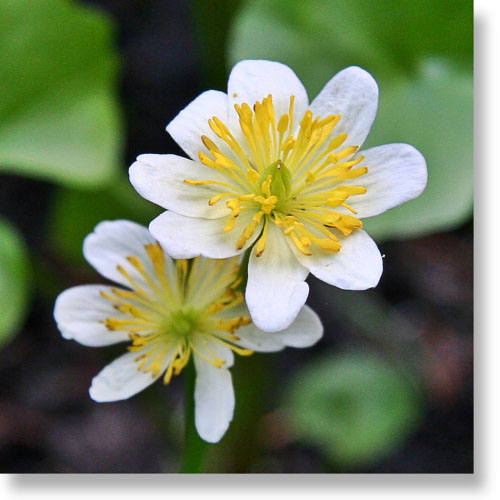
Marsh Marigold (Caltha leptosepala)
Aliases: White Marsh Marigold, Twinflowered Marsh Marigold, Broadleaved Marsh Marigold, Elkslip Marsh Marigold
Family: Buttercup (Ranunculaceae)
True to its name, Marsh Marigold grows in Yosemite's wetter areas - stream banks and swampy clearings, for instance. I've seen them gathered by the hundreds along the stream that meanders beside the Lukens Lake trail. If they're not blooming, you might be able to recognize them by their kidney-shaped leaves, which dwarf the actual flowers. Like a few other Yosemite species, such as Western Rue Anemone, Marsh Marigold flowers have no petals - what appear to be the petals are actually sepals, specialized leaves that cover and protect the flower during the bud stage.
Blooms: May - July
Lifespan: Perennial
Origins: Native (see distribution maps for California and US/Canada)
Caltha leptosepala etymology: Caltha is the Latin term for marigold; it in turn derives from a Greek word for a basket or bowl, in reference the shape of the flowers. Leptosepala means "narrow sepals". It's a combination of lepton, a Greek word for a variety of small-value coins, and sepalum, the Latin word for sepal, itself a combination of Greek words for "covering" and "petal". [1] [2] [3] [4]
This Photo: Along the Lukens Lake trail, early July
Other Resources: CalFlora · CalPhotos · USDA · efloras.org